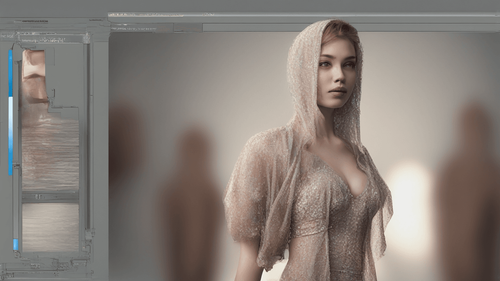
Introduction
In the ever-evolving landscape of artificial intelligence, one remarkable feat that has captured both the imagination and the technical prowess of researchers and developers is the creation of AI-generated images of yourself. Imagine a world where you can see yourself in different eras, explore creative interpretations of your appearance, and even delve into the realm of science fiction. This article takes you on a captivating journey through the world of AI-generated images, from the underlying technology to its myriad applications and the questions it raises about identity and creativity.
Unveiling the Technology Behind AI Generated Images
Understanding Generative Adversarial Networks (GANs)
Generative Adversarial Networks, commonly referred to as GANs, are at the heart of AI-generated images. These neural network architectures consist of two components: the generator and the discriminator. The generator creates images, while the discriminator evaluates them for authenticity. Through a continuous cycle of creation and evaluation, GANs progressively enhance the quality of generated images, leading to astonishingly realistic results.
Harnessing Deep Learning and Neural Style Transfer
Deep learning techniques, particularly neural style transfer, contribute to the finesse of AI-generated images. Neural style transfer allows the blending of artistic styles with personal photographs, yielding visually appealing and surreal compositions that bridge the gap between reality and imagination.
Applications of AI Generated Images
Personalized Time Travel: Reimagining Your Past and Future
Ever wondered how you'd look in a Victorian-era portrait or a futuristic cyberpunk scene? AI-generated images can transport you across time and space, offering a glimpse into alternate versions of your personal history and potential future selves. These playful creations evoke a sense of nostalgia and inspire conversations about the concept of self.
Artistic Expressions Redefined: From Selfies to Masterpieces
AI-generated images empower individuals to transform mundane selfies into stunning works of art. By incorporating famous art styles, such as Van Gogh's brushstrokes or Picasso's abstract forms, these images elevate self-expression to new heights, fostering a sense of artistic exploration and innovation.
Entertainment and Social Media: The Selfie Revolution
Entertainment platforms and social media have witnessed a revolution fueled by AI-generated images. From viral challenges to immersive filters, individuals engage in creative interactions with their AI-altered selves, sparking trends that capture the attention of global audiences and redefine the dynamics of online engagement.
Fashion Forward: Virtual Wardrobes and Style Experiments
Imagine trying on a range of outfits without changing a single piece of clothing. AI-generated images enable virtual wardrobe experiments, allowing you to explore diverse fashion choices and curate your ideal style without the hassle of physical changes.
Sci-Fi and Fantasy: Bringing Imaginary Worlds to Life
For enthusiasts of science fiction and fantasy, AI-generated images provide an avenue to visualize characters and scenes from beloved books and movies. Witness your favorite literary and cinematic worlds come to life in vivid detail, blurring the line between fiction and reality.
Ethical and Identity Considerations
AI-generated images raise intriguing ethical and identity considerations. As the technology advances, questions emerge about the ownership of these digital identities and the potential impact on concepts of self-perception and authenticity. Delving into these discussions enriches our understanding of the human relationship with technology and creativity.
Frequently Asked Questions
How does AI generate images of yourself?
AI employs complex algorithms and neural networks, particularly GANs, to analyze and replicate patterns in existing images, creating unique variations that resemble you.
Can AI-generated images be used commercially?
Yes, AI-generated images are finding applications in advertising, branding, and creative campaigns, offering innovative ways to showcase products and engage audiences.
Are AI-generated images indistinguishable from real photographs?
While AI-generated images are becoming remarkably realistic, keen observers might still notice subtle differences upon close examination.
What safeguards are in place to prevent misuse of AI-generated images?
Developers and researchers are actively working on watermarking techniques and digital signatures to ensure the authenticity and integrity of AI-generated content.
Is there a potential for AI-generated images to influence self-perception?
AI-generated images can both enhance and challenge self-perception by presenting alternate visualizations, raising important conversations about identity and self-expression.
What does the future hold for AI-generated images of yourself?
As AI technology continues to advance, we can anticipate even more sophisticated and versatile applications, from medical simulations to historical reenactments.
Conclusion
The realm of AI-generated images of yourself is a captivating fusion of art, technology, and identity. With GANs, neural style transfer, and deep learning at its core, this innovative field opens the doors to personalized time travel, artistic experimentation, and novel forms of entertainment. While ethical and identity considerations add depth to the discourse, the future promises boundless potential for AI-generated images to reshape how we perceive ourselves and the world around us. Embrace this digital evolution and embark on a journey of self-discovery through the lens of artificial intelligence.